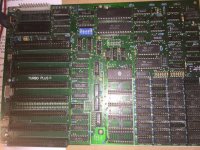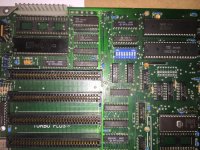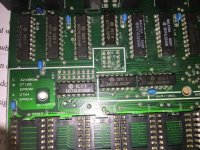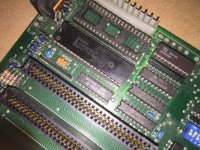SpidersWeb
Veteran Member
After setting myself up a new workbench with lots of room (plus a few new tools) I decided to have a crack at these three motherboards.
These are motherboards I've attempted to investigate earlier, but got put in the 'too hard, deal with it later' box.
None of these are absolutely critical parts - they're really spares - but I'm enjoying a little bit of practical diagnostics and it's good for learning, but without a win I wanted to come on here and get some advice.
<removed references to other two boards to avoid confusion>
Golden Star Turbo Plus (C) 1986 board 3:
Came inside a random case as non-working, it appears to have lost its mind.
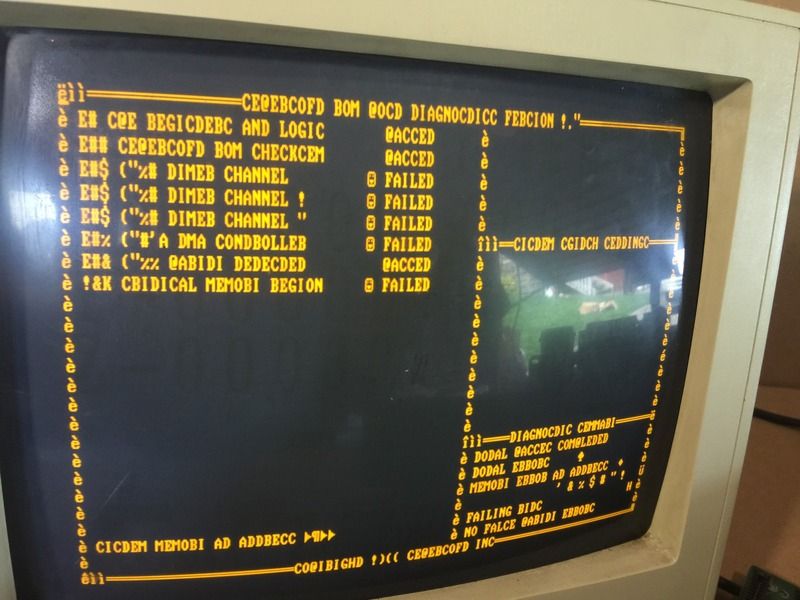
So one or more data bits aren't getting to the video card, causing lower ASCII values. I tested for continuity between D0 -> D7 on the ISA bus to a 74LS245 chip which is an octal buffer for the CPU (right next to the CPU and first ISA slot). I then checked the continuity between it's inputs and the CPU. All connections were 100%.
I then used a logic probe to check for signal activity on D0->D7 on the ISA card - all seemed to be firing busily.
I then tried replacing the CPU - no change.
Any suggestions on what to do next?
These are motherboards I've attempted to investigate earlier, but got put in the 'too hard, deal with it later' box.
None of these are absolutely critical parts - they're really spares - but I'm enjoying a little bit of practical diagnostics and it's good for learning, but without a win I wanted to come on here and get some advice.
<removed references to other two boards to avoid confusion>
Golden Star Turbo Plus (C) 1986 board 3:
Came inside a random case as non-working, it appears to have lost its mind.

So one or more data bits aren't getting to the video card, causing lower ASCII values. I tested for continuity between D0 -> D7 on the ISA bus to a 74LS245 chip which is an octal buffer for the CPU (right next to the CPU and first ISA slot). I then checked the continuity between it's inputs and the CPU. All connections were 100%.
I then used a logic probe to check for signal activity on D0->D7 on the ISA card - all seemed to be firing busily.
I then tried replacing the CPU - no change.
Any suggestions on what to do next?
Last edited:

